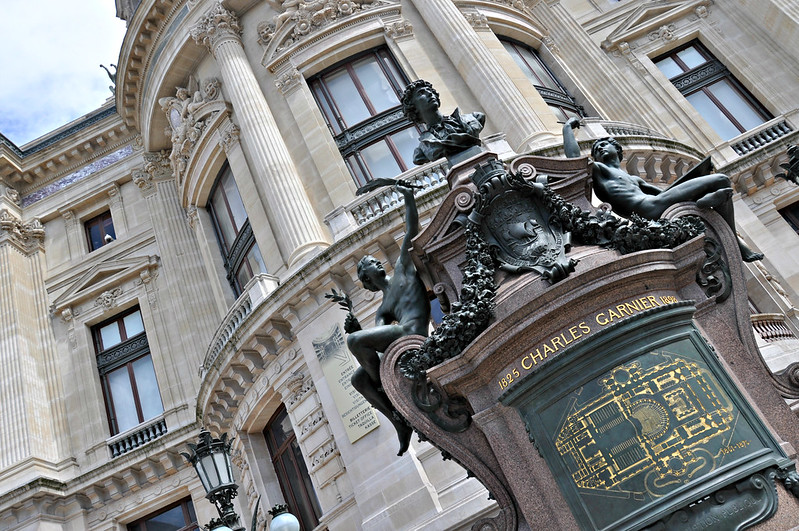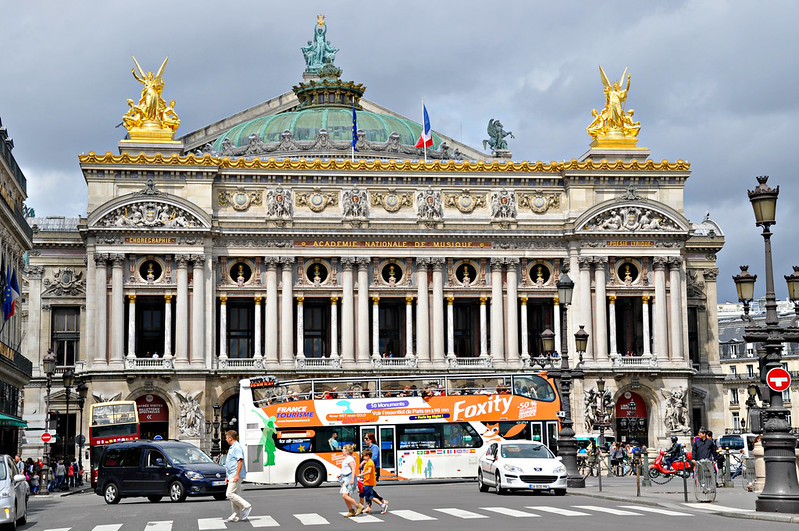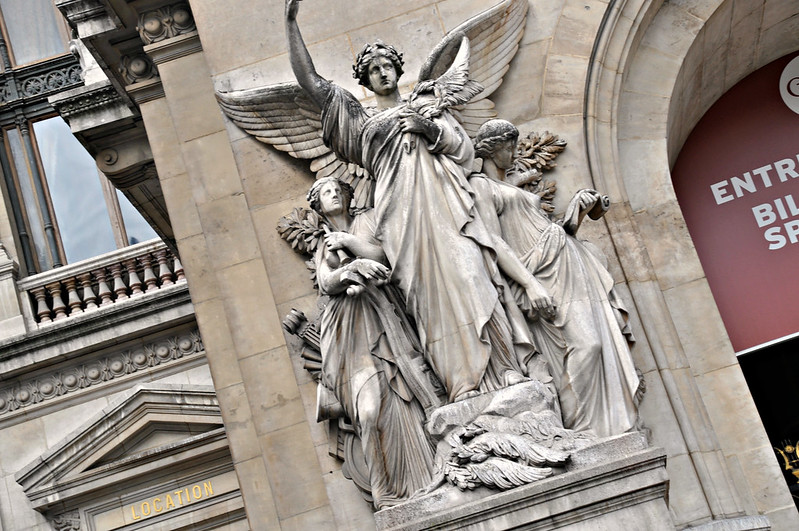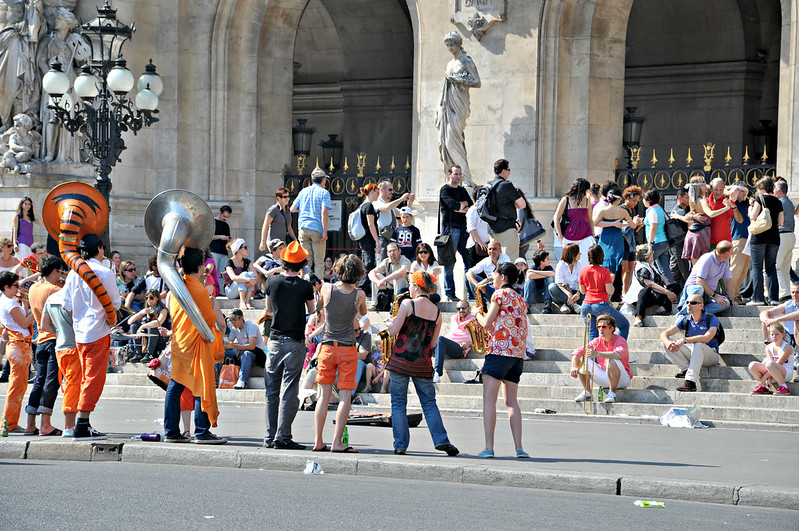Continuando o nosso passeio de bicicleta por Paris fomos parar á Praça da Ópera onde vimos uma grande agitação á volta do Palácio Garnier. Nele está a Academia Nacional de Música e a Ópera de Paris. Junto ás escadas do elegante edificio, um grupo de músicos tocava como se a Academia tivesse saído á rua e tinham bastante público. Ficámos algum tempo a ouvi-los tocar enquanto contemplávamos a fantástica fachada do palácio.
Continuing our bike ride through Paris we stopped at the Opera Square where we saw a great agitation around the Palais Garnier. In it there's the National Academy of Music and the Paris Opera. Standing by the stairs of the elegant building, a group of musicians played as if the Academy had come out to the street and had they gathered quite a crowd. We stayed some time to listen to them play while we contemplated the awesome facade of the palace.

Construído por Charles Garnier em 1861 a pedido de Napoleão III, foi inaugurada 14 anos depois. Combinando vários estilos arquitectónicos num clássico exemplo de Beaux-Arts, a sua fachada tem um trabalho de detalhe impressionante. É das mais conhecidas no mundo e ficou ainda mais famosa por servir de "palco" para a obra de Gaston Leroux, o Fantasma da Ópera.
Built by Charles Garnier in 1861 at the request of Napoleon III,it was opened 14 years later. Combining various architectural styles a classic example of Beaux-Arts, the facade has a striking detail work. It is the most famous in the world and became even more famous for being the stage for the work of Gaston Leroux, The Phantom of the Opera.





Built by Charles Garnier in 1861 at the request of Napoleon III,it was opened 14 years later. Combining various architectural styles a classic example of Beaux-Arts, the facade has a striking detail work. It is the most famous in the world and became even more famous for being the stage for the work of Gaston Leroux, The Phantom of the Opera.








Sem comentários:
Enviar um comentário